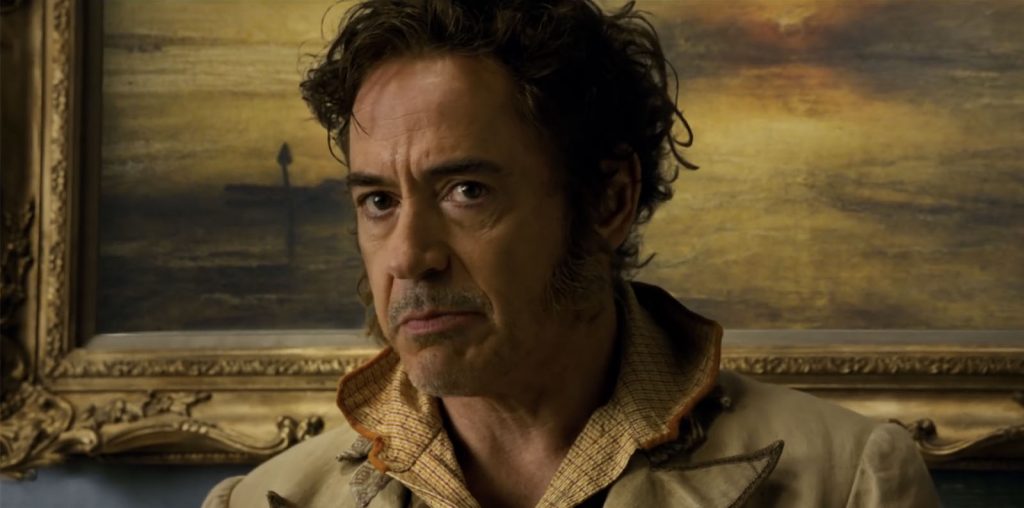
The three parts of Chris McNamara’s fine new video triptych, collectively called “The Language Films,” all share some formal features. They all consist of short sequences of images, each of which might be a fragment from a larger movie. They all have voice-over narrations in a variety of languages, including German, French, Italian, Spanish, Cantonese, Mandarin, and Bengali. The narration is subtitled in English. For each sequence, the first line, which gives a title and setting for the scene to follow, is untranslated.
During much of the film, the accompanying voice-over text describes the images fairly literally and accurately, in the language one would expect to read in a screenplay. From the very first line, the text also refers to the way that the story is told, as well as to the contents of the shot. (“Eliminate all references to cameras and lab effects,” warns the text in the opening sequence.) Sometimes the text blatantly contradicts the image, as when “a cluttered street” accompanies a shot of a nearly empty street. Some lines of text not only do not describe the accompanying shot, they do not suggest any particular visual representation. (“A child will always ask what his father has for him upon his return” accompanies a shot of an office building.) Poignantly, a shot of a child’s swing, gently swaying as if the child has just left, is accompanied by the line “to explain this would be to undo it.”
The first film, “Establishing Shots,” calls attention to those shots which begin any narrative film scene and set up our expectations about the story. The second film, “The Uses of Movement,” focuses on that key element in film language: motion. The third film, “Character Sketches,” examines the small details of behavior and setting that show us who a character in a film is.
The playful relationship between the text and the images, and the constant references to the visual syntax of films, make the experience of watching these films a little like bungee jumping: you feel like you are constantly dipping into different narrative worlds, but then, the film’s focus on how the story is told, rather than what the story is about, keeps pulls you back from the story and making you aware of how you are processing the information. Like bungee jumping, this heightened self-awareness is exhilarating, and the film’s complexly contrapuntal form is continually surprising and pleasurable.
The different characters, settings, and story fragments which make up the films remain entirely fragmented, and never connect up directly to form a larger narrative. Indeed, this is what makes it clear, from the beginning, that the films want us to focus on language, not on narrative. But the episodes do relate, poetically and indirectly, to the viewer’s experience. Many of the fragments, such as a bit about a woman waiting for a train or one about a man with a photo of a woman whom he is seeking, speak of a search for connections. This feeling of searching certainly resonates with the viewer’s experience of searching for connections between the text and the images. The films have multiple references to the visual language of dreams, calling attention to how dreams, in modern life, have come to resemble films. Shots and descriptions of a hydrodynamic testing facility, where all sorts of nautical and other equipment is tested, seem to have a special meaning in the film. Film itself can be thought of as a technology which controls, tests and analyzes the flow of language and images, just as this facility controls and measures the flow of water.
The films also contain many references to architecture and patterns of urban development. Some of the texts start off talking about a character in the shot, but then they veer off to describe the building in the background or to give the history of the urban planning represented by the setting in the shot. One is used to thinking that the setting in a film merely “contains” the story, but this is just as fallacious as saying that words merely “contain” meaning. In film, the setting is intrinsic to the story’s meaning.
In all three films, McNamara has a wonderful way of ending the film with a shot and text that feels as if it sums up the experience, bringing it to a satisfying close, without actually spelling out the film’s meaning or telling you what to think about it. For example, “Establishing Shots” ends with a poignant reference to shots which are “poor excuses for what cannot be shown in images.” This artistic skill, of being able to pose fascinating questions for the viewer, while leaving him enough space to find his own answers, epitomizes the complex appeal of these films.
